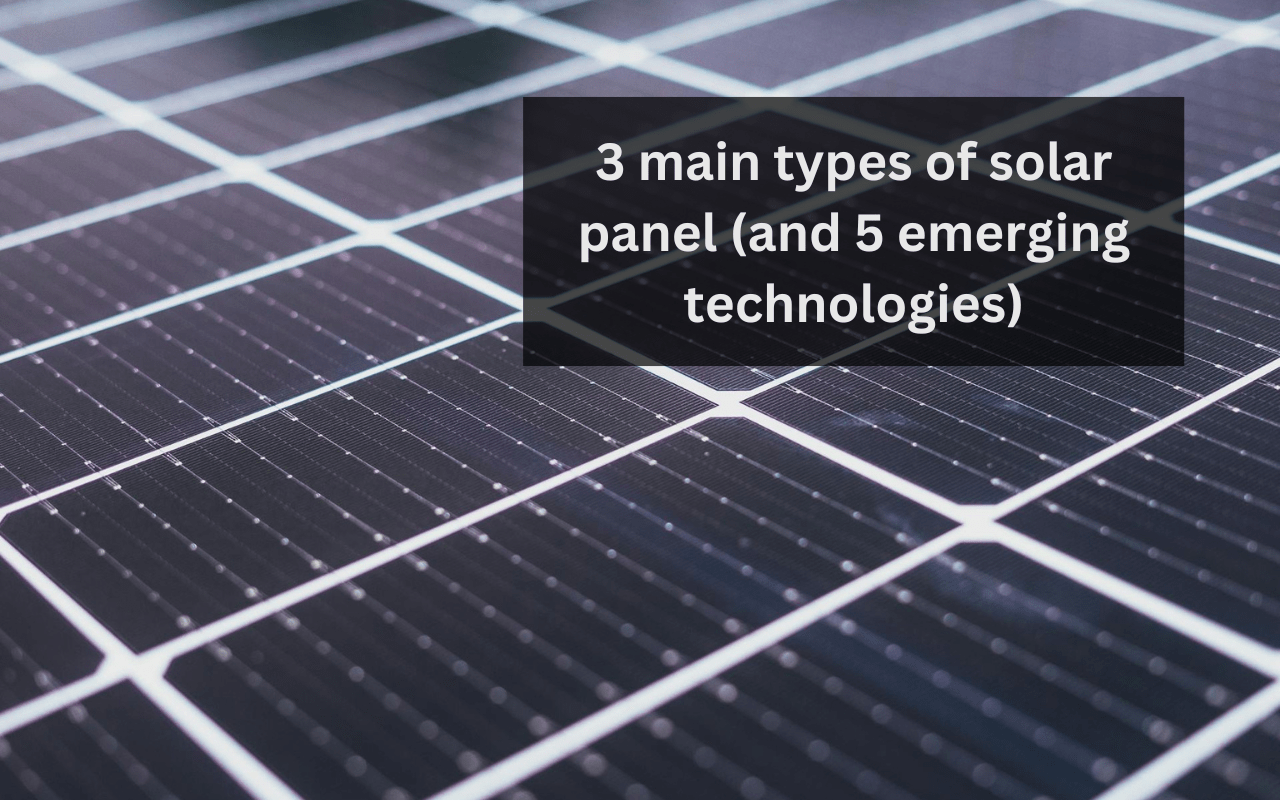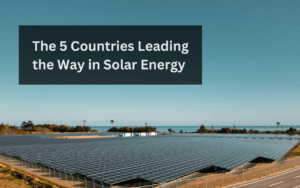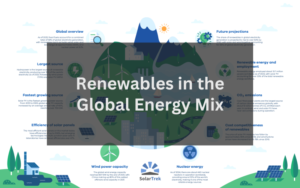This article explores the three main types of solar panel, from the efficient monocrystalline to the versatile thin-film, as well as five more cutting-edge developments like perovskite and bifacial panels.
Whether you’re aiming for maximum efficiency or need a flexible installation option, understanding these technologies will help you make an informed decision about which type of solar panel is best suited for your energy needs and environmental conditions.
Overview of types of solar panel
| Type | Efficiency (%) | Lifespan (years) | Cost | Appearance | Best for |
| Monocrystalline | 18-24 | 25-40 | Higher | Sleek black | Residential and commercial; high efficiency needs |
| Polycrystalline | 13-16 | 25-30 | Lower | Blue mosaic | Budget-friendly options; less intensive energy needs |
| Thin-Film | 7-13 | 10 to 20 | Lowest | Variable, often black | Large spaces, flexible needs, less efficiency required |
| Perovskite | >28 | Uncertain | Higher than standard mono/poly | Black or blue | Cutting-edge applications; highest efficiency needs |
| Bifacial | 16-25 | 25-30 | Higher than standard mono/poly | Black or blue | Areas with highly reflective ground surfaces |
| Transparent | 1-10 | 25-35 | Very high | Transparent | Innovative buildings, aesthetic installations |
| Organic Photovoltaic Cells | <19 | <20 | Moderate to high | Variable | Eco-conscious installations, flexible applications |
| Quantum Dot Solar Cells | <18 | Uncertain | Expected to be high | Transparent or variable | High-tech applications, improving existing technologies |
1. Monocrystalline solar panels
- Efficiency: High (around 18-24%)
- Lifespan: Long (25-40 years)
- Cost: Higher due to the quality and efficiency
- Appearance: Sleek black look
- Best for: Residential and commercial applications where space is at a premium and maximum efficiency is desired.
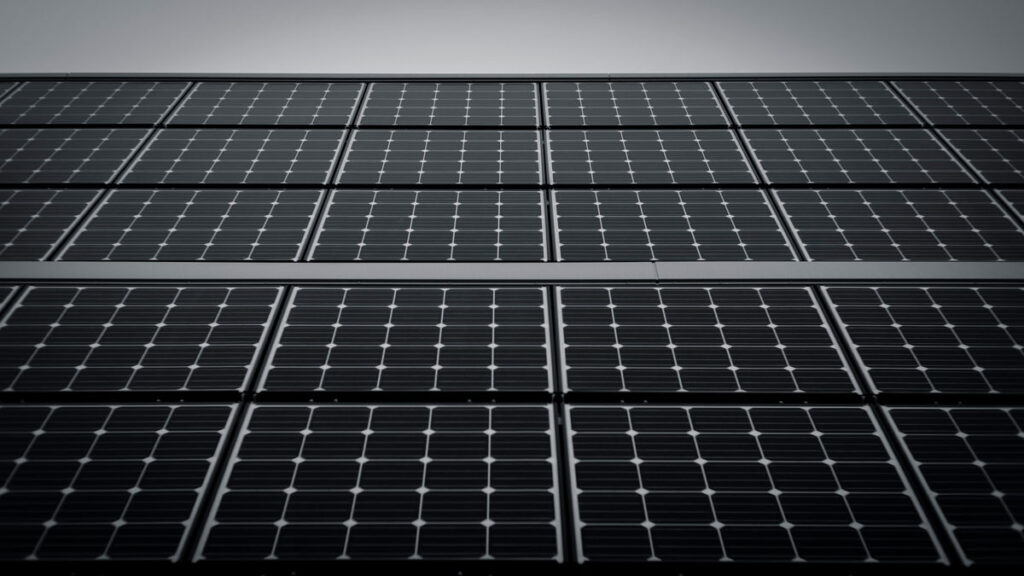
Monocrystalline solar panels are best known for their high efficiency and sleek black appearance. Made from single-crystal silicon, these panels feature a unique design, as the silicon is formed into bars and cut into wafers, giving the panels their distinctive dark look and rounded edges. The high purity of the silicon allows these panels to achieve efficiency rates of 18% to 24%, making them ideal for installations where space is limited.
The production process, which involves slicing cylindrical silicon ingots, is precise and results in minimal material wastage, although it contributes to the higher cost of these panels. The investment in monocrystalline panels is justified by their long lifespan, typically 25 to 40 years, and their ability to maintain high efficiency even at higher temperatures.
Despite the initial high costs, the long-term savings from reduced electricity bills and low maintenance needs make monocrystalline panels a financially sound choice for those seeking efficiency and aesthetics in their solar energy systems.
Pros:
High efficiency: Best in class for solar efficiency, ideal for maximizing output in limited spaces.
Long lifespan: Durable and long-lasting, often exceeding 25 years with minimal efficiency loss.
Aesthetic appeal: Sleek, uniform appearance enhances roof aesthetics, preferred for visible installations.
Cons:
Higher cost: More expensive upfront due to high-quality materials and manufacturing process.
Space efficiency: While they produce more power, they still require significant roof space for larger setups.
Heat sensitivity: Despite performing well in heat, efficiency can decrease in extremely high temperatures.
2. Polycrystalline solar panels
- Efficiency: Moderate (around 13-16%)
- Lifespan: Moderate (25-30 years)
- Cost: Lower than monocrystalline, cost-effective
- Appearance: Characteristic blue, speckled look
- Best for: Budget-conscious installations with sufficient space to compensate for lower efficiency
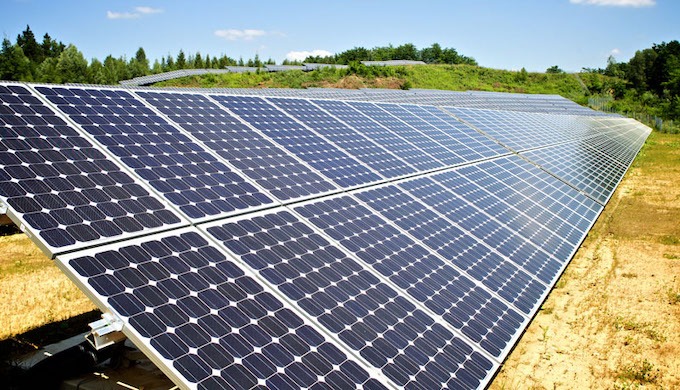
Polycrystalline solar panels, recognized by their blue, speckled look, are a practical and more budget-friendly alternative to the more expensive monocrystalline options. These panels are created by melting multiple silicon crystals together, a process that is less costly and faster than the one used for monocrystalline panels, thus making polycrystalline panels less expensive to produce.
Despite their lower price point, polycrystalline panels still offer a respectable efficiency of 13-16%. They are a popular choice for residential and commercial properties where ample installation space is available, allowing for a larger number of panels to compensate for their slightly lower efficiency.
The lifespan of polycrystalline solar panels generally ranges from 25 to 30 years, similar to monocrystalline panels, but they are somewhat more sensitive to high temperatures, which can affect performance over time.
Pros:
Cost-effective: Less expensive than monocrystalline panels, offering a good balance between cost and efficiency.
Reduced waste: The manufacturing process results in less silicon waste compared to monocrystalline.
Moderate efficiency: Suitable for areas with ample installation space.
Cons:
Lower efficiency: Not as efficient as monocrystalline, requiring more panels for the same output, which can necessitate more space.
Temperature sensitivity: Performance can degrade faster in high-temperature environments.
Aesthetic considerations: The blue, speckled appearance may not be as visually appealing as the sleek black of monocrystalline panels.
3. Thin-film solar panels
- Efficiency: Lower (around 7-13%)
- Lifespan: Shorter (10-20 years)
- Cost: Generally lower, varies by material and supplier
- Appearance: Thin, flexible sheets
- Best for: Large commercial spaces, unconventional surfaces, and mobile installations where traditional panels are not feasible
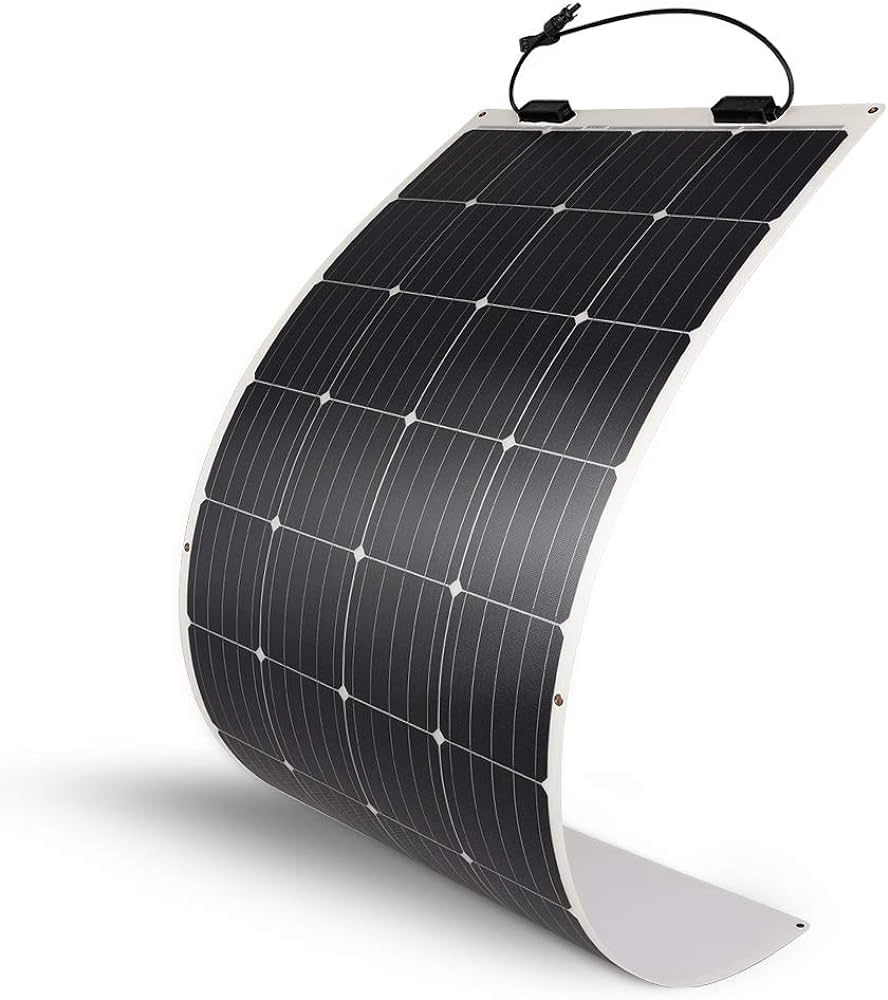
Thin-film solar panels stand out due to their unique manufacturing process, which involves depositing one or more layers of photovoltaic material – such as amorphous silicon, cadmium telluride, or copper indium gallium selenide – onto a substrate. This technique allows these panels to be exceptionally lightweight and flexible compared to crystalline-based solar panels.
Their flexibility opens up a variety of installation options, making them ideal for covering large areas, integrating into building materials, or using in mobile applications such as on vehicles or temporary structures. Additionally, their production process is simpler and can be less expensive than that of crystalline panels.
However, thin-film panels generally offer lower efficiency rates (7-13%) and have shorter lifespans, ranging from 10 to 20 years, which may require more frequent replacements depending on the deployment environment.
Pros:
Flexibility: Can be applied to a variety of surfaces, including curved surfaces, not suitable for traditional panels.
Lower cost: Cheaper to produce and often less expensive to purchase.
Less heat sensitive: Performs better than crystalline panels in high-temperature settings.
Cons:
Lower efficiency: Requires more space to generate the same amount of power as higher-efficiency panels.
Shorter lifespan: Typically lasts only about 10 to 20 years, which may not be ideal for long-term investments.
Limited scalability: Due to their size and efficiency constraints, scaling up can require significantly more space.
5 emerging solar panel technologies
1. Perovskite solar panels
- Efficiency: Very high (up to 33.7%)
- Lifespan: Developing (expected 25-30 years)
- Cost: Potentially high initially
- Appearance: Similar to traditional panels
- Best for: Future applications aiming for high efficiency in limited space
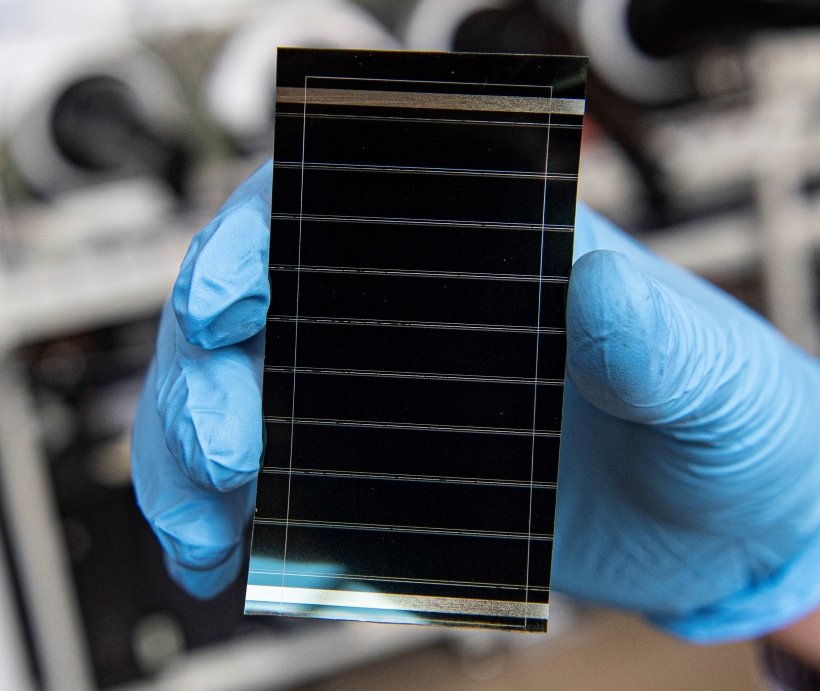
Perovskite solar panels are a cutting-edge development in solar technology, known for their potential to achieve exceptionally high efficiency rates. These panels utilize a synthetic material that mimics the crystal structure of the mineral perovskite. This technology is particularly promising due to its ability to absorb light across a broader spectrum compared to traditional silicon cells.
Researchers have been able to push the efficiency of perovskite-silicon tandem cells to impressive new capabilities, with some laboratory results showing efficiencies of up to 33.7%. This makes them one of the most promising candidates for future solar applications, potentially revolutionizing how solar energy is harvested.
Pros:
High efficiency: Capable of converting a greater proportion of solar energy into electricity.
Potential for lower thickness: Offers the possibility of thinner solar panels, reducing material usage.
Versatile applications: Suitable for integration into a variety of building materials and locations.
Cons:
Durability questions: Long-term stability and durability under environmental exposure are still under research.
Cost and availability: Currently expensive to produce and not yet widely available on the commercial market.
Environmental and health concerns: Some perovskite materials contain lead, raising potential environmental and health safety concerns.
2. Bifacial solar panels
- Efficiency: 19-25% (front), 16-25% (rear)
- Lifespan: Comparable to monocrystalline panels (25-40 years)
- Cost: Higher than traditional panels due to advanced technology
- Appearance: Similar to standard panels but capable of absorbing light on both sides
- Best for: Areas with high levels of ground reflectivity (e.g. snow)
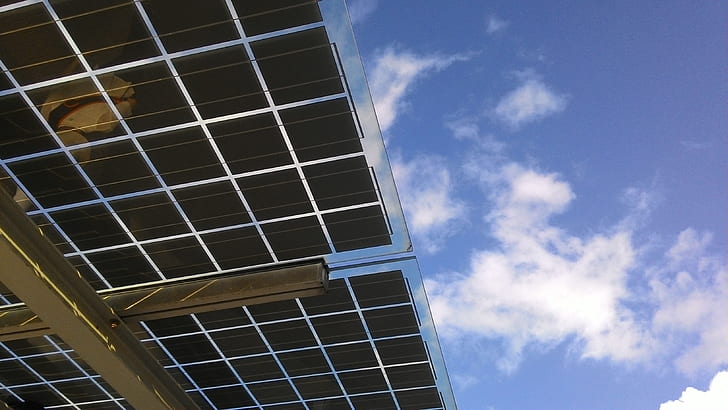
Bifacial solar panels are designed to increase energy production by capturing sunlight from both the front and back sides of the panel. This technology takes advantage of ambient light and reflected solar energy from the surrounding environment, which can significantly boost their overall energy output compared to traditional single-faced solar panels.
These panels are particularly effective in areas with high levels of ground reflectivity (like snow or light-colored ground cover) and are often used in large-scale solar farms or commercial settings where additional energy capture is feasible. They are also increasingly popular in residential installations where their unique properties can be effectively utilized. Their front efficiencies typically range from 19-25%, with rear efficiencies ranging from 16-25%, depending on the type of bifacial PV module and manufacturer.
Pros:
Increased energy yield: Capable of generating more electricity from the same sunlight exposure.
Versatile installation: Effective on rooftops, ground mounts, and carports where reflective conditions are favorable.
Long lifespan: Durable and capable of long-term operation, similar to the best single-sided panels.
Cons:
Higher initial cost: The complexity of design and manufacturing leads to higher upfront costs.
Installation considerations: Requires careful consideration of location and mounting to maximize their efficiency advantages.
Limited compatibility: Not all existing solar setups can easily upgrade to bifacial technology without significant modifications.
3. Transparent solar panels
- Efficiency: Lower (around 1-10%)
- Lifespan: Standard (25-30 years)
- Cost: High due to cutting-edge technology
- Appearance: Transparent, integrates seamlessly with various surfaces
- Best for: Commercial buildings and specialized applications where aesthetics are a priority

Transparent solar panels are another groundbreaking development in solar technology, which provide a unique blend of functionality and aesthetics. These panels are designed to be integrated into windows and other transparent surfaces, providing a sustainable energy solution without compromising on design.
The primary advantage of transparent solar panels is their ability to convert sunlight to energy while still allowing light to pass through, making them ideal for applications in glass-dominated structures like skyscrapers, greenhouses, and electronic displays.
Pros:
Aesthetic integration: Can be used in windows and facades without altering building appearance.
Versatile applications: Suitable for urban environments where traditional solar panels are not viable.
Innovative use of space: Enables solar generation in otherwise unusable spaces.
Cons:
Lower efficiency: Currently offers lower energy conversion rates compared to traditional opaque panels.
High cost: The sophisticated technology and materials used are still expensive.
Niche application: Primarily beneficial in specific settings like commercial buildings or areas where aesthetic considerations are crucial.
4. Organic photovoltaic cells
- Efficiency: Moderate (currently around 11-13%)
- Lifespan: Shorter (less than conventional panels)
- Cost: Potentially lower due to simpler production processes
- Appearance: Variable, can be designed to blend with different materials
- Best for: Eco-conscious applications and integrating into consumer products

Organic Photovoltaic Cells (OPVs) are an innovative approach to solar technology which use organic molecules to convert sunlight into electricity. This type of solar cell is known for its potential in eco-friendly applications due to the use of non-toxic, organic materials.
OPVs are crafted from materials that are more abundant and less costly than the inorganic materials used in traditional solar panels, making them a potentially cheaper alternative once they reach commercial scale. Their flexibility opens up new applications such as integration into clothing, portable chargers, and unconventional architectural elements.
Pros:
Reduced environmental impact: Uses materials that are less harmful to the environment compared to traditional solar panel materials.
Aesthetic flexibility: Can be made semi-transparent or colored, offering aesthetic options for integration into buildings and devices.
Potential for lower costs: Production processes can potentially be simpler and cheaper, utilizing less energy.
Cons:
Lower efficiency: Currently less efficient in converting sunlight compared to silicon-based panels.
Durability concerns: Generally have a shorter lifespan due to the organic materials’ sensitivity to environmental factors.
Development stage: Still largely in the research and development phase, with limited commercial availability.
5. Quantum dot solar cells
- Efficiency: High potential (up to 66% theorized)
- Lifespan: Developing (expected to improve with ongoing research)
- Cost: Anticipated to be high initially due to advanced technology
- Appearance: Similar to traditional panels but with more potential for customization
- Best for: High-performance applications and areas with limited space
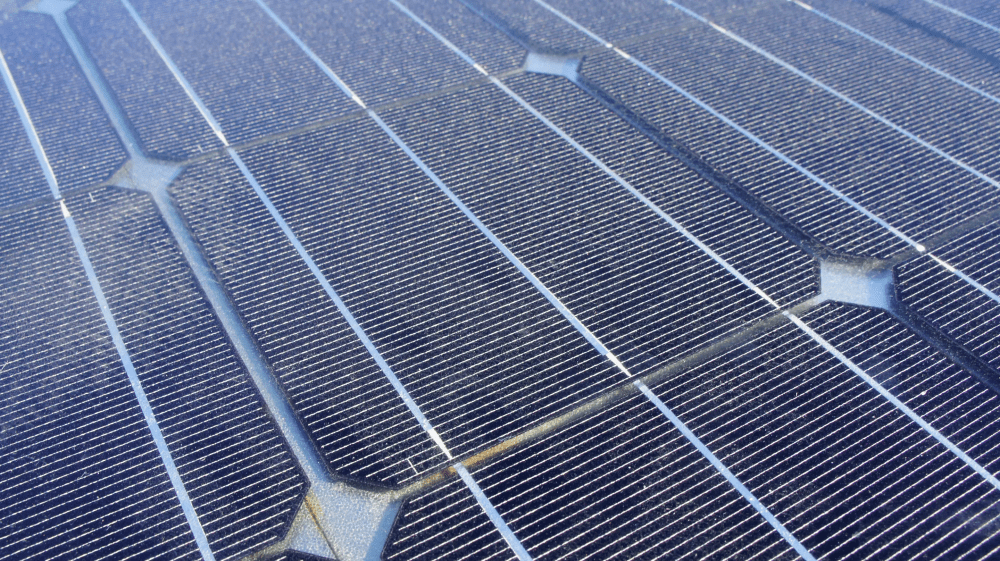
Quantum Dot Solar Cells utilize nanocrystals that can absorb a wide spectrum of sunlight, including ultraviolet light. These cells are notable for their potential to significantly surpass the efficiency limits of current solar panel technologies.
Quantum Dot Solar Cells feature advanced light absorption capabilities, allowing them to capture more sunlight than traditional materials. Their nanoscopic size not only enhances efficiency but also enables the production of compact and flexible solar panel designs. This adaptability makes them suitable for a variety of applications, from residential to industrial, due to their efficiency and compact nature.
Pros:
Higher efficiency potential: Theoretically capable of reaching efficiencies much higher than conventional solar panels due to enhanced light absorption capabilities.
Versatile applications: Could be used in a variety of settings, from residential to industrial, due to their efficiency and compact nature.
Innovative design: Allows for the creation of lighter and more adaptable solar panels.
Cons:
High initial costs: As a new technology, initial production and material costs could be high.
Durability concerns: As with many new technologies, longevity and resistance to environmental factors are still under research.
Development stage: Still primarily in the research phase with limited commercial availability.
Conclusion: Choosing the right type of solar panel for your needs
Selecting the right type of solar panel for your needs depends on several key factors including budget, space, efficiency needs, and specific application requirements. For homeowners with limited roof space who desire optimal power generation, monocrystalline panels are ideal due to their high efficiency and sleek design, albeit at a higher cost. Alternatively, those with ample space and tighter budgets might consider polycrystalline panels, which offer a balanced cost-to-efficiency ratio.
Thin-film solar panels, known for their flexibility and lower cost, are suitable for large commercial spaces or non-traditional surfaces, though they generally offer lower efficiency. For those interested in the cutting edge of solar technology, exploring emerging options like perovskite or organic photovoltaic cells could be appealing, especially if sustainability and environmental impact are significant concerns. However, due to their high cost, these are not typically considered commercially available in 2024.
Each type of panel has its specific advantages that can be matched to different environmental conditions and installation scenarios. It’s important to evaluate not just the upfront cost but also the potential long-term savings, maintenance needs, and the aesthetic impact on your property. Consulting with a solar energy expert can provide tailored advice, ensuring that the selected solar technology aligns with both your energy goals and practical requirements for installation.
For further reading, you might be interested in:


